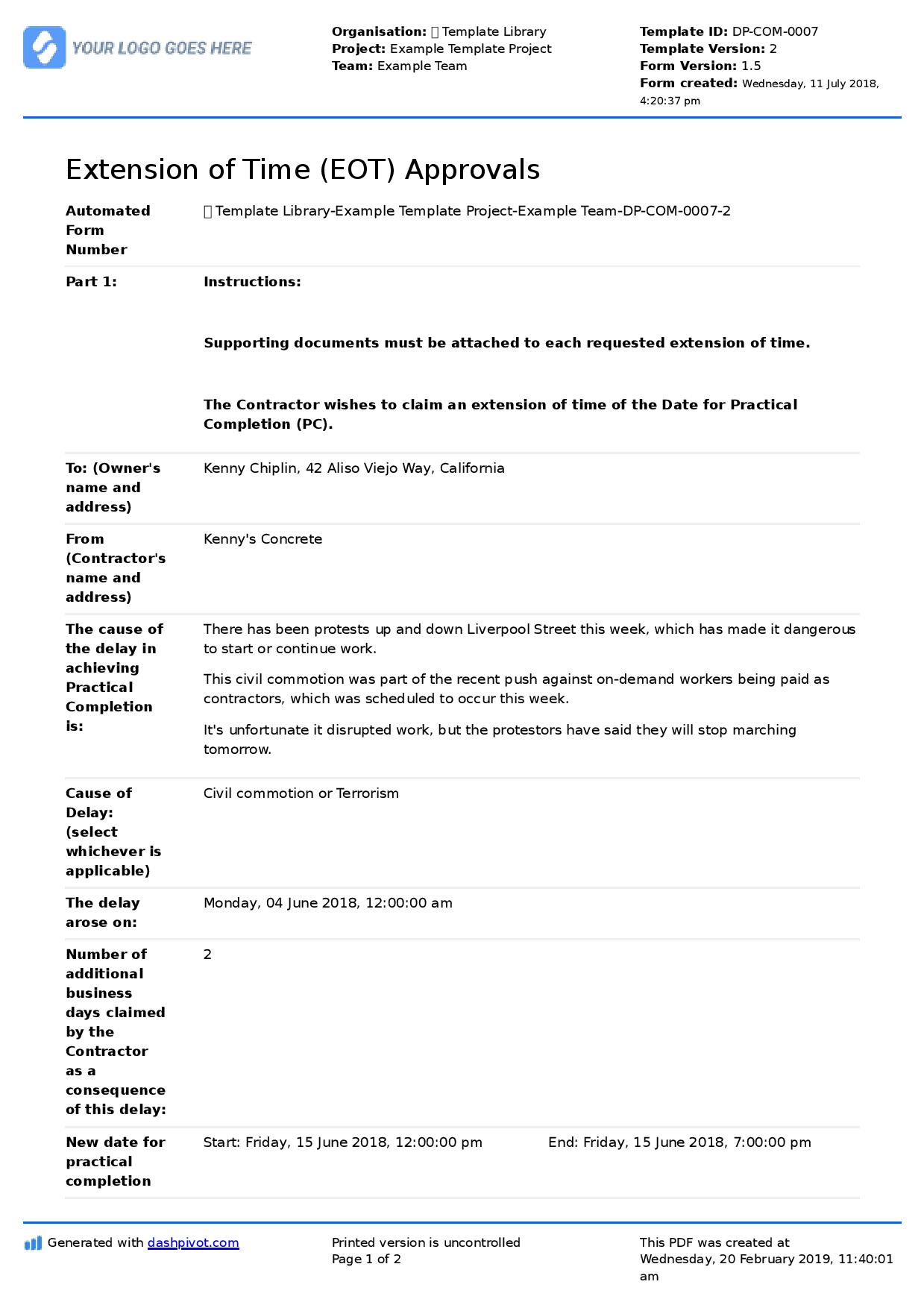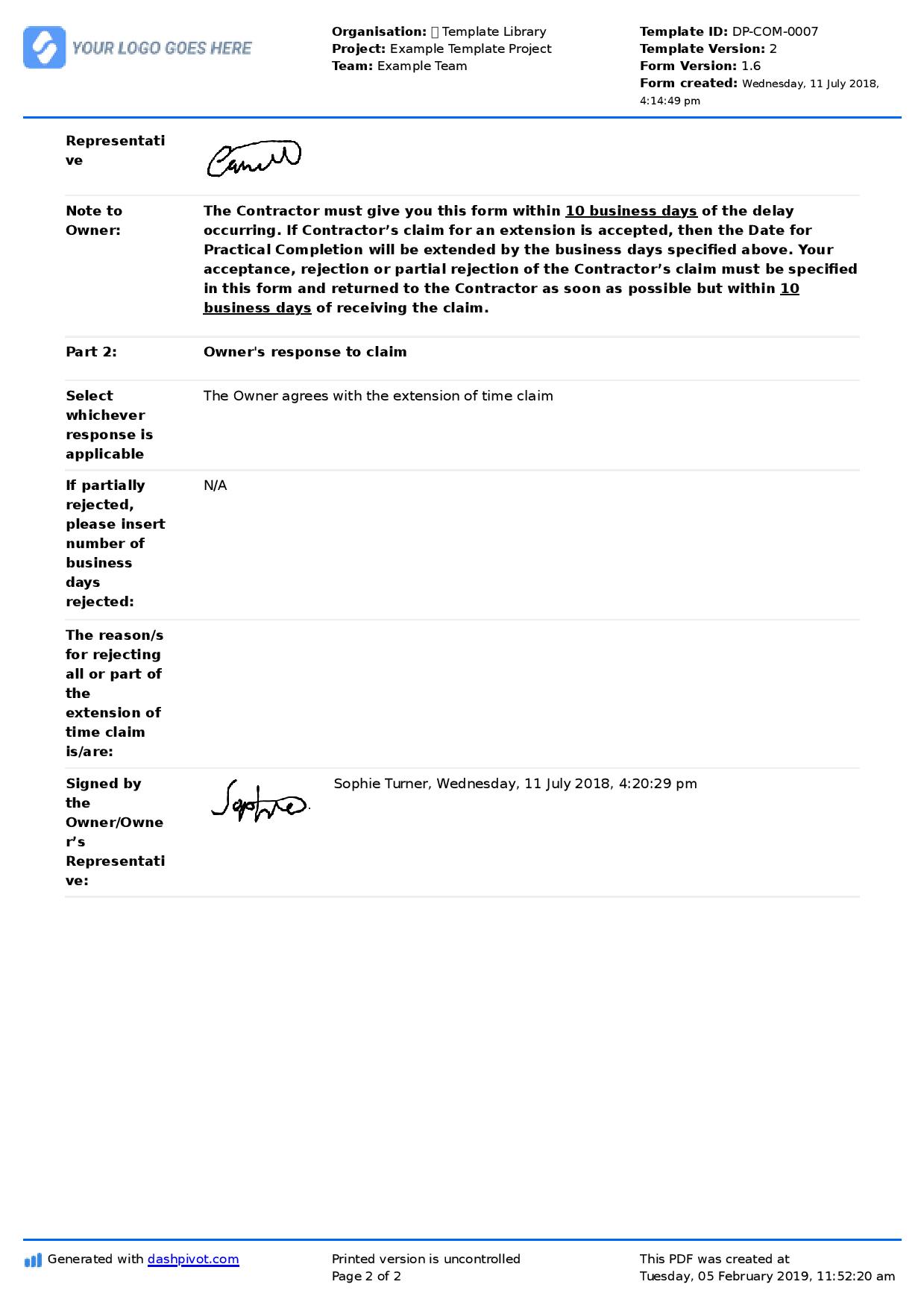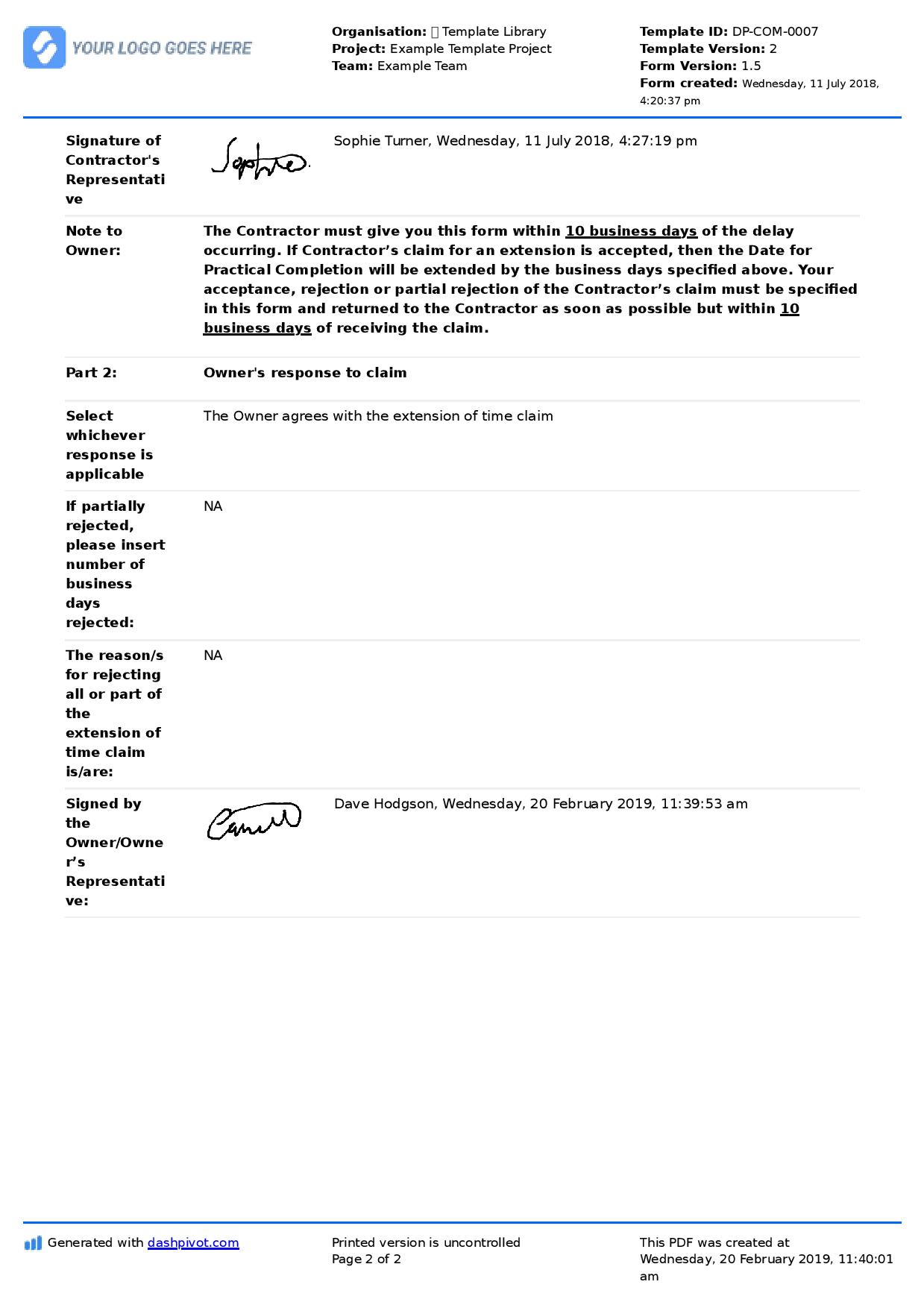Commercial – Sample letter for delay in project completion
Sample letter for delay in project completion
In this article, we provide you with a proven and easy to use sample letter for delay in project completion, as well as some other helpful tips and even better resources you can use to better communicate project delays. Delays aren't ideal, so it's critical that you communicate them professionally.
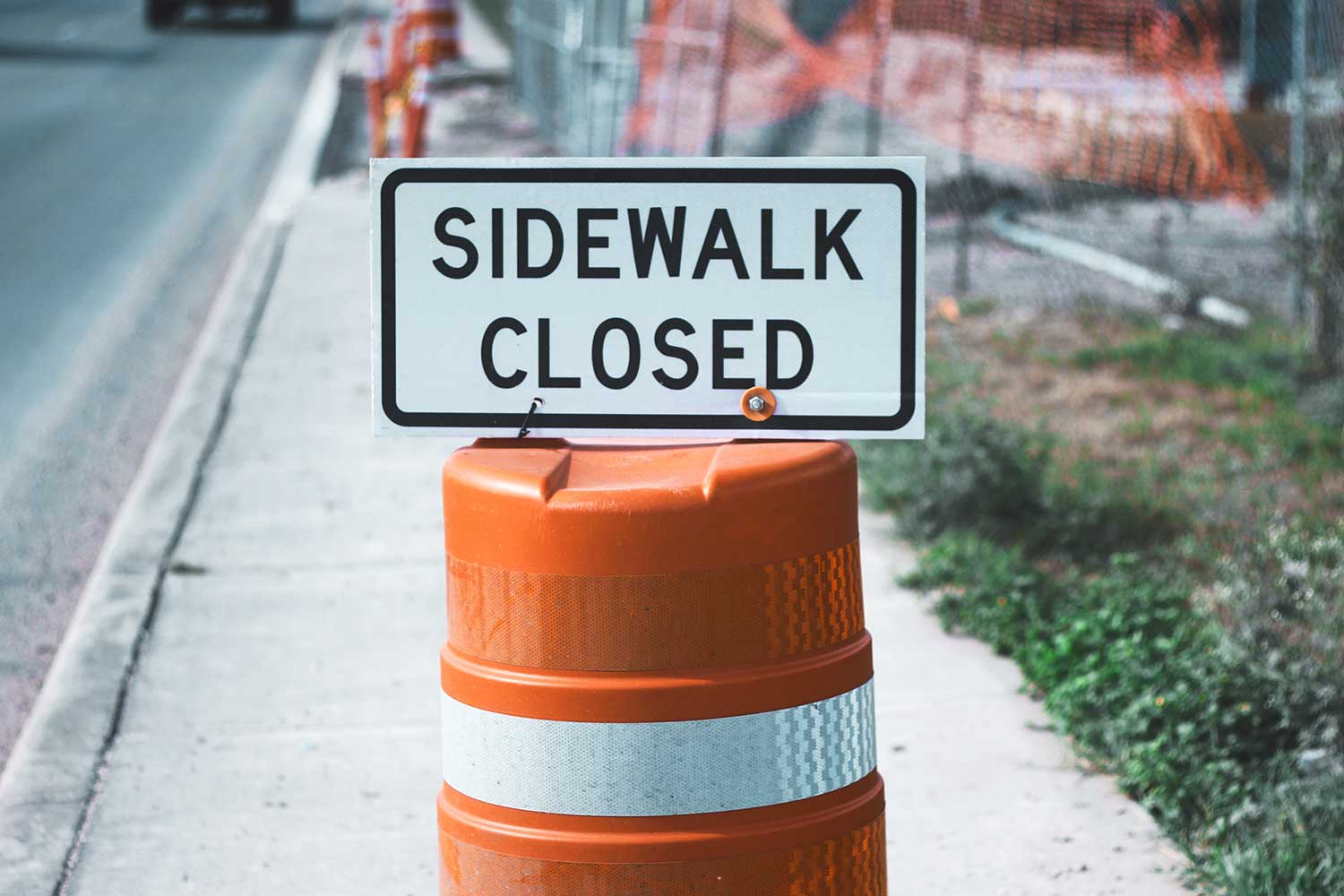
Why is there a delay in your project completion?
Delays in project completion are a standard and expected part of project management, and companies involved in frequent and/or complicated projects build in a number of redundancies to plan for and mitigate the effects of project delays.
Even so, every project delay can cause headaches, and some project delays can cause serious time and cost blowouts which push projects and companies over budget and into the red zone.
Delays in project completion can stem from a number of different project areas or activities, some of which are within a companies control, and some of which are external factors which can't be controlled and often can't be accurately predicted:
- Unpredictable weather can throw construction, mining and other industrial projects off track
- Poor time and resource estimates can impact a companies ability to deliver
- Scope creep is a common cause of delays and project headaches
- Lack of finances or funding can cause serious project delays
- A lack of project tracking can lead to incremental delays which overtime accumulate and snowball into larger effects
- Poor collaboration and communication - which we will partially cover in this sample letter for delay in project completion
In fact, one of the easiest ways that companies can better manage project delays is through better communication.
Although delays in project completion have been around since the beginning of 'projects', most companies still don't manage and communicate project delays effectively - which compounds the negative effects of each and every delay.
Through poor communication, what seemed like a simple delay can become a series of unfavourable events which leads to serious budget and timeline headaches which involves a number of parties and stakeholders.
In order to really impact project delays at your company level, and at the project level, you need to create a consistent and reliable process and framework for documenting and communicating project delays.
The more consistent and standardised your process and workflows are, the faster and more organised your delay communication will be - and the less frequent and costly your delays will become.
A sample letter for delay in project completion
One of the more formal and traditional methods of communicating delays in project completion was and is through an official 'letter for delay in project completion'.
These letters served construction and other project based companies well for many years, and were similar to many project documents and forms: managed via paper, word docs and PDFs via email and other direct communication channels.
If you are still keen on managing your delays in the letter format, then feel free to copy the sample letter for delay in project completion below.
The sample comes with a simple yet proven project delay letter structure which has areas you can customise for each unique delay.
Keeping your project completion delay letters and communication as standardised and consistent as possible is really important to how well you manage delays in the long term.
You want to create standardised and efficient processes which improve over time, and which you and other parties and stakeholders can trust to be and look professional and streamlined.
Starting with a letter structure like the sample below, and adapting it to each delay will enable you to hone the template over time and improve how you communicate changes.
[Insert Date]
[Insert Recipient Name]
[Insert Recipient Address]
[Contract Number]
LETTER TO [X] FOR DELAY IN PROJECT COMPLETION
This letter is to inform you about the progress regarding the [Project name].
The [Insert reason for delay] means that [X project] has fallen behind schedule by approximately [X].
The project {or specific phase of works} was due to be completed on [Insert date], but because of the delays in project completion, the amended date is [Insert date].
Here is a guide to the changes which will effect you:
[Insert phases/changes]
The dates of the above phases are only estimates, as the progress of the work depends in part on [X].
[Your company name] will do everything possible to minimise the inconvenience caused by this work. However, you might experience some inconvenience during this period, and we ask for your understanding in this regard.
If you have any questions regarding this letter, please call the [X] on [X] or email us at [X].
I hope this provides you with sufficient information.
Signed by,
Authorised Person
While a sample letter similar to the above letter does work, letters come with some obvious downsides for delay management which include increased ambiguity, slower communication and response times, letters get lost or forgotten, and only one person can complete and edit a letter at a single time.
The weakness of of these letters have been overcome and rectified by designated delay, variation and change order software - which streamlines and improves how your company can manage delays and other project changes - which mitigates delays and saves you time and money - your most valuable resources.
The better way to communicate project completion delays
Project management is all about managing moving pieces efficiently, and the trickiest moving pieces to manage are delays, changes and variations.
These project curveballs require more collaboration than many other project activities, and can benefit massively from a reliable process which all parties can lean on.
Because of their importance to project management, project management softwares like this can now streamline and automate large parts of the delay process which used to take you and your teams and external parties many hours and countless headaches.
While you may be interested in some of these features and solutions, you can actually improve your project delay process through simply digitising the format of your letter for delay in project completion.
Inside of the software, you can create a standardised project completion delay template using a drag-and-drop form builder (or choose from our free library), which you can use every time you complete a new delay form.
These digital templates enable you to add more information than a simple letter, including detailed descriptions, date fields and photo/video evidence. The form is formatted just like your site and process forms and documents, so everyone can easily digest the information and then share it around.
Because delays in project completion and approval based or signed off, you can also setup automated workflows for these delays.
Once a 'letter for delay in project completion' is complete by you and signed off, it will be automatically sent to the other party who gets a notification to sign it off. Instead of sending a letter via mail or email and waiting for a reply, you can move delay letters instantly - and ensure they don't get missed or forgotten with automatic notifications.
Another positive outcome for your delay management is that all of these forms and records remain stored securely in one place. Rather than have a bunch of letters floating around, or have to search through folder structures to find what you're looking for, you can easily search and access any letter for delay in project completion in a single place.
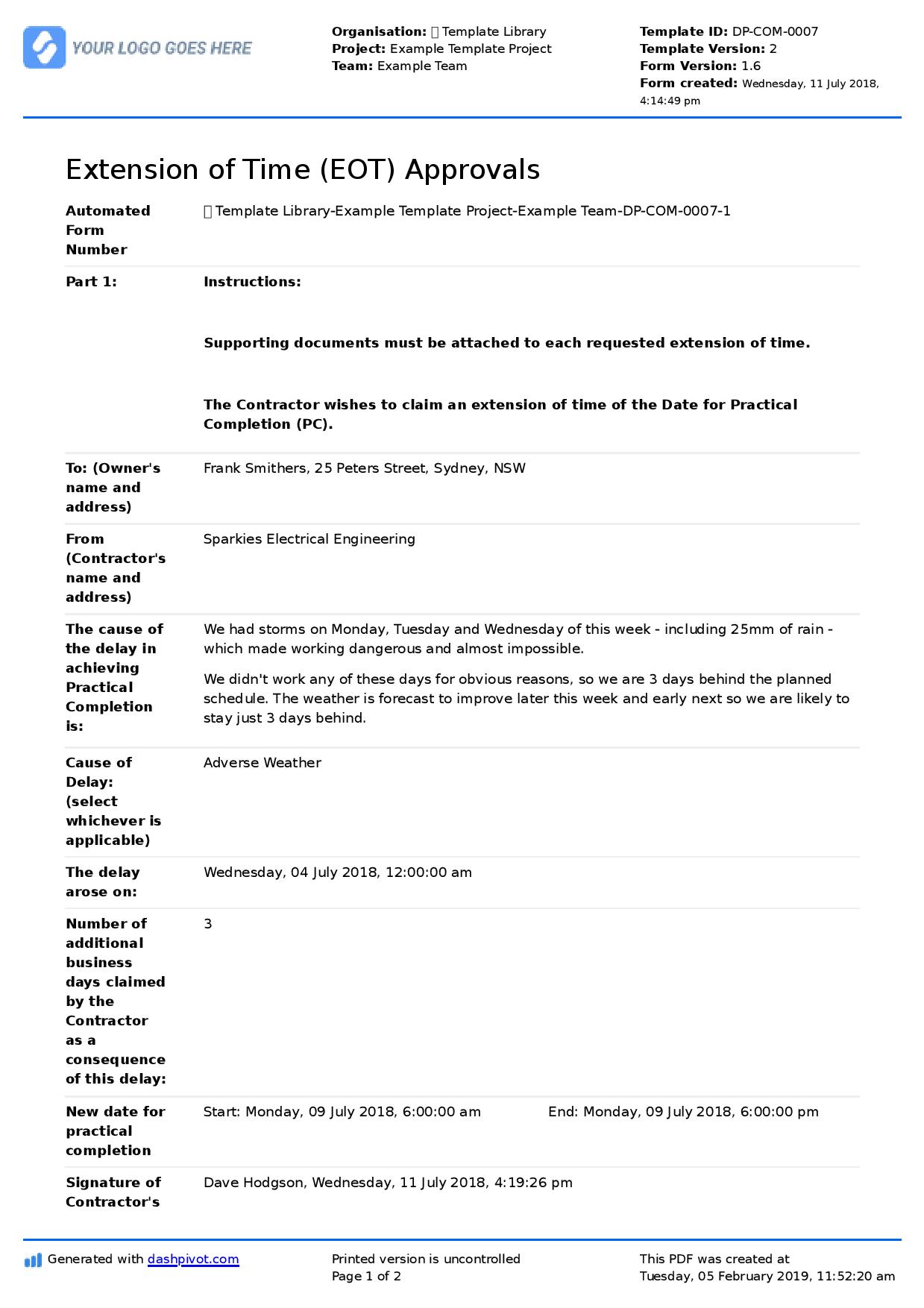
Use this template as your 'letter' for delays in project completion for free.
Managing project completion and any project delays is a constant work in progress, but the best way to avoid and mitigate project delays - as well as to create positive stakeholder relations through collaboration is to focus on your delay processes and communication.
